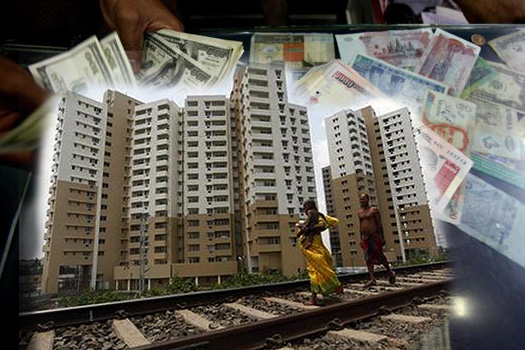Purchasing a house is each individual’s fantasy. The sentiment owning a property is inestimable, unmatched contrasted with different sorts of speculations, for example, stocks or gold. In this manner, there has been a relentless ascent sought after for good properties in the land market, particularly in certain quick creating urban areas like Kolkata. Land in Kolkata, India for occurrence has been blasting, with purchasers spoilt for decision with the expanded number of extravagance pads, 2 BHK pads, 3 BHK pads, duplexes and conservative studio lofts on the rundown of land offerings.
Before you begin searching for your fantasy home, here are a couple of things you should know.
Your prerequisite
As a matter of first importance, settle on the extent of condo you require. Whether you require a studio condo, a 2 BHK level, a 3 BHK level or a loft with more space. This choice will clearly rely on upon the span of your family, in the event that you live all alone or have kids, your way of life and the amount of time you spend at home on a normal. There may likewise be a few different contemplations like whether you require an exercise center or a group lobby in the complex, and in such a case, purchasing extravagance pads in Kolkata that accompany different enhancements, would be a more astute choice.
Your financial plan
The following vital thought is the financial backing. Know your financial plan and pick properties in like manner. Whenever planning, consider all extra costs, for example, property enrollment costs, legitimate costs, stamp obligation and expenses. On the off chance that you are choosing a bank advance, it is imperative to consider the up front installment sum. Most banks require a 20% of the aggregate property estimation as initial installment, notwithstanding credit handling expenses and charges. Orchestrate the assets ahead of time so that the whole procedure of purchasing a property turns out to be speedier and less complex.
Auto stopping
Nowadays, purchasing an auto park alongside your loft is verging on basic. Check on the off chance that you require a secured auto stopping office or an open auto park. It’s a given that a took care of auto stop regularly costs somewhat more than an open auto park. Once chose, it is vital to incorporate this in your financial plan as well.
Favored area
At the point when settling on purchasing your fantasy home, another vital thing to consider is its area. Ensure the property is found near your work environment and the school, on the off chance that you have a family with youngsters. Besides, for a property in a territory that is very much associated with open transport and has pleasantries like business sector, doctor’s facility, library and so on is certain to get you great returns in the event that you choose to offer your level later on. Neighborhood is likewise an essential component. Private buildings in Kolkata with both spending plan and extravagance pads offer a two-fold advantage – the accommodation and courtesies of city living and the solace of a quiet district.
Resale or fresh out of the plastic new?
While area is of extraordinary significance, something else to consider while putting resources into land is the age of the property. In the first place choose, in the event that you might want to purchase a resale property or a fresh out of the plastic new place. Old properties here and there can be purchased at a much lower rate and can be revamped later on to reestablish the past eminence. On the other hand, new structures offer cutting edge pleasantries like club house, group lobbies, children’s play territory and considerably more.
Know the engineer
Do your examination and pick a property that is being produced by a presumed developer. Famous real estate groups utilize great quality materials, as well as certification convenient ownership, simple straightforward exchange and even repay the purchasers if there should arise an occurrence of postponed development. This gives the home purchaser complete genuine feelings of serenity.When this underlying sifting has been done, the procedure of settling for that one flawless property to fit all your needs will turn out to be much easier and faster.
Summary : Buying your fantasy home is never simple. To ensure you pick a property that impeccably fits all your needs, we have rattled off a couple of pointers. Take after these and settle on the right decision.




